Keel 1976 Pl. 47 b
RESEARCH: Bennie Keel defined this as an annular or segmented coil pottery that was built on a conical disc, or tabular base. Keel’s description of this type was based on his research in sites in western North Carolina.
TEMPER: Connestee Check Stamped pottery was tempered with fine to medium sand with small amounts of crushed quartz occasionally mixed in. The sand often contained mica naturally, but it was not purposefully mixed in. The surface was smooth, but sandy to the touch with a light tan to dark brown exterior, with darker colors being more predominant.
SURFACE DECORATION: The entire vessel was finished with check stamping that averaged 5x4mm except for a plain band that was sometimes present between the rim and shoulder of the vessel. The checks of this type are smaller than the 7x9mm Swannanoa checks. They are similar in size to the Pigeon Check Stamp type, but the paste is very different. The plain band that was sometimes present between the rim and shoulder of the vessel may have rarely had a circuit of round or rectangular punctations along the shoulder of the vessel.
VESSEL FORM: Vessel forms included conoidal jars, hemispherical bowls and flat-based jars with podal supports. Lips were rounded, flattened or chamfered. These were notched, brushed or punctated. Rims were most often flaring, but were also straight, vertical or incurved.
CHRONOLOGY: A number of radiocarbon dates from various sites have been associated with Connestee pottery that range from Middle to Late Woodland periods. From Russell Cave, Alabama, the type dated to A.D. 740+/- 100. In Tennessee the type dated to A.D. 605+/-90 at Icehouse Bottom. In Georgia at Tunacunnhee it dated to A.D. 150; at Manderville to A.D. 530+/-150. In North Carolina at the Garden Creek Mound No.2 site it dated to A.D. 805+/-85. Keel concluded that Connestee pottery disappeared between A.D 600 to 650. Associated points might include Ebenezer and Jack’s Reef Corner Notch points.
GEOGRAPHICAL DISTRIBUTION: Connestee pottery has been found in western North Carolina, western South Carolina, eastern Tennessee, and northwestern Georgia, and northeastern Alabama.
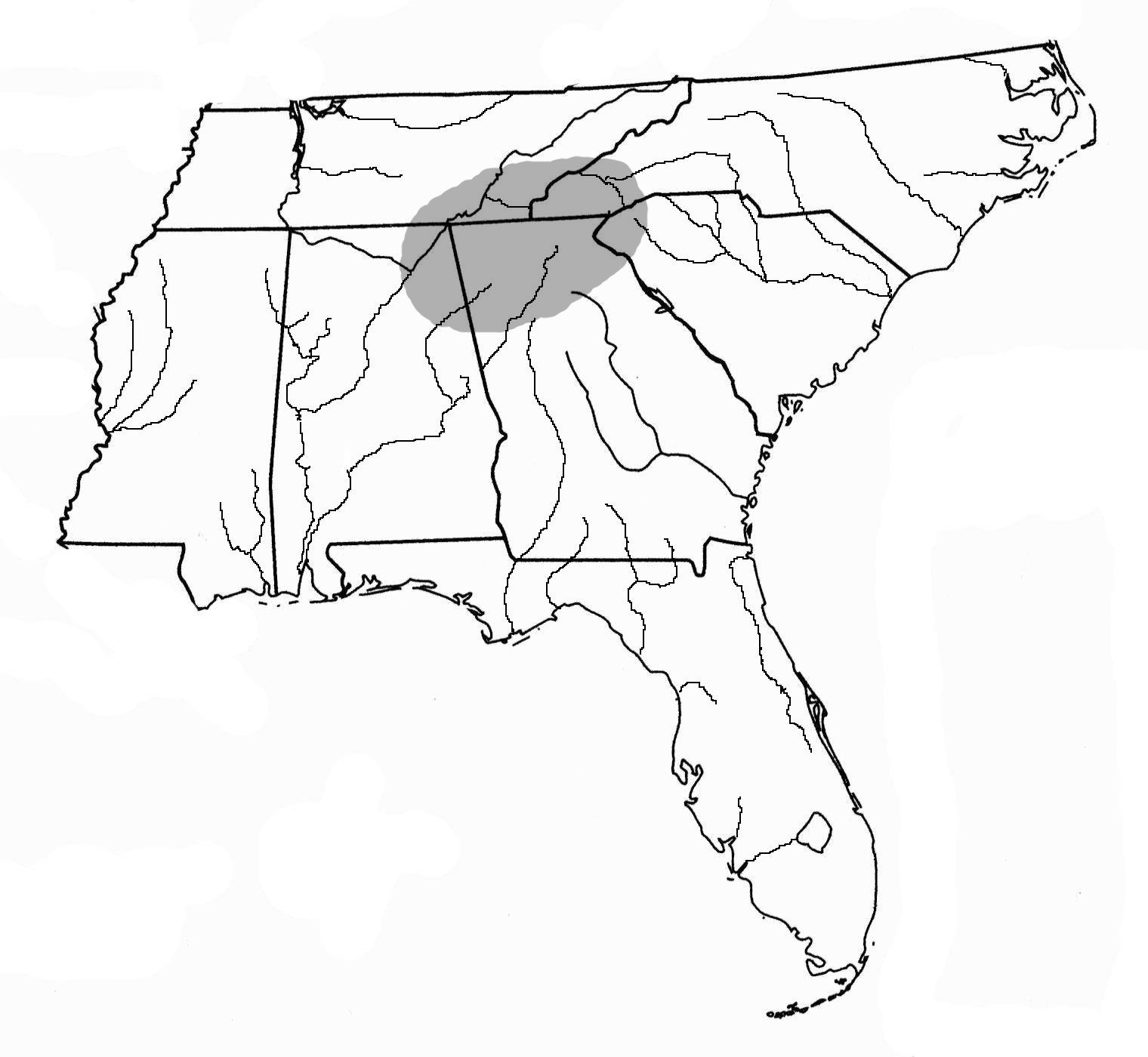
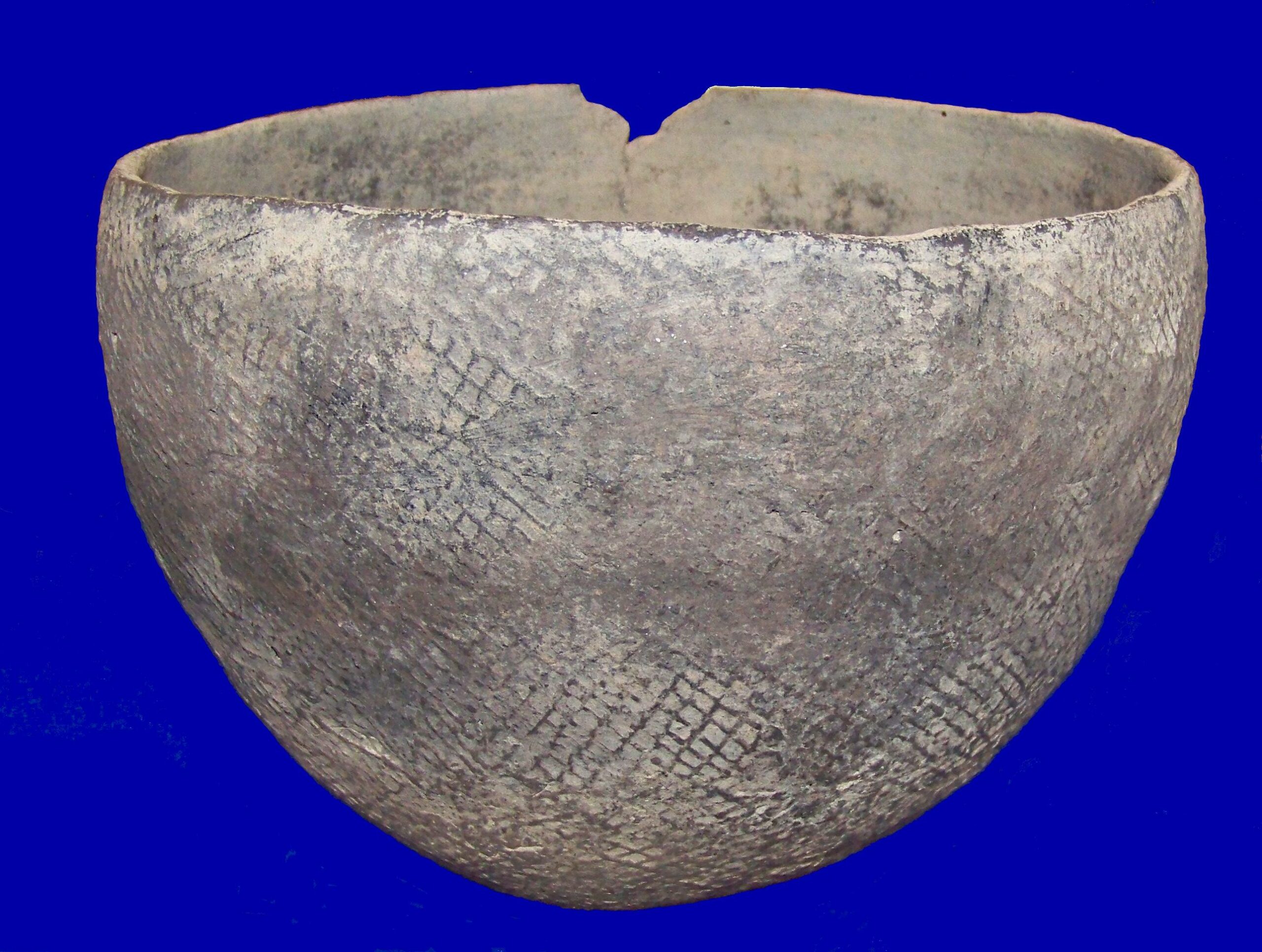
(Left) Dr. Jim Tatum collection, (Right) Bruce Butts collection (Bottom) Wayne Porch collection
RESEARCH: The type was named by Joseph Caldwell and Antonio Waring in the 1930’s.[i] The name Deptford Bold Check was essentially dropped by the 1960’s. The type was named for the Deptford site in Chatham County, Georgia. This is the same as Cartersville Check Stamped north of Georgia’s Fall Line.
TEMPER: Sand is more often used for temper in Florida and southern Georgia while grit was used elsewhere.
SURFACE DECORATION: The entire surface of the vessel is covered with check stamping. Stamps are generally square or slightly rectangular and clearly stamped. Some stamping was purposely obliterated after stamping.
VESSEL FORMS: Deptford pottery is usually deep, straight-sided jars with rounded or flattened rims. Vessels often have short, stamped tetropodal legs.
CHRONOLOGY: Deptford pottery is part of the Middle Woodland period. Associated points might include spike forms, Woodland Triangular, Baker’s Creek, Yadkin, Copena, Camp Creek, Greenville, and Swan Lake points.
GEOGRAPHIC DISTRIBUTION: Deptford pottery is found over a wide range from the South Carolina Coast across Georgia and parts of eastern Tennessee and eastern Alabama and northern Florida as far south as the Tampa Bay area. North of Georgia’s Fall Line it is known as Cartersville Check Stamped, but the pottery is the same as Deptford pottery.

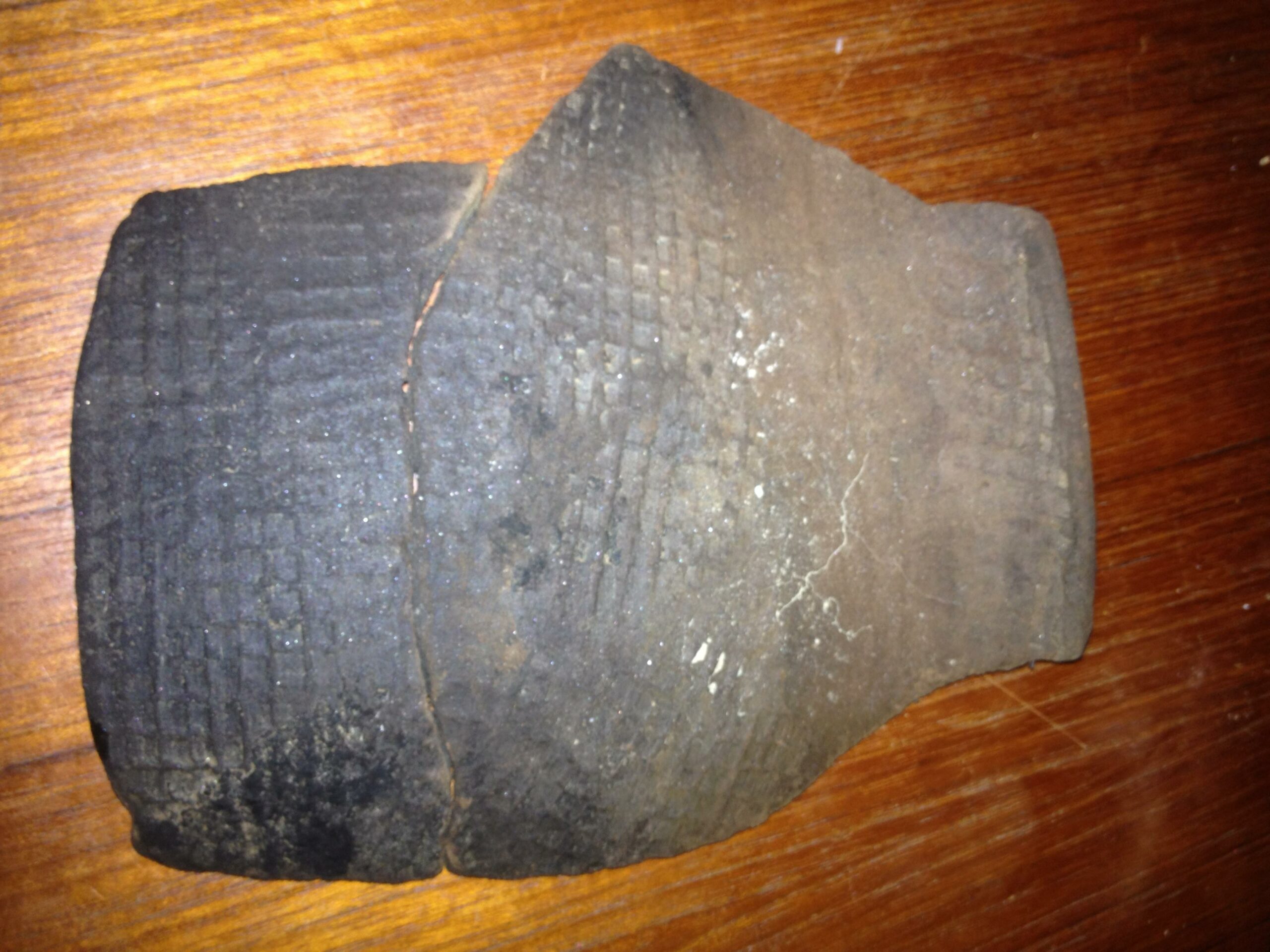
(Top left & bottom) Author’s collection, (Top right) Tom Forman collection
RESEARCH: This type was named by Tom Lewis and Madeline Kneberg in 1946.[ii] Named for the Overhill Cherokee of the 18th century, this type is found along the Little Tennessee and upper Hiwassee rivers in eastern Tennessee and perhaps extreme northern Georgia.
TEMPER: Coarsely crushed shell or occasionally coarse grit served as temper for this type. Grit-tempered examples may be slightly earlier than the shell-tempered examples.
SURFACE DECORATION: Check stamping decorated this type extending over the entire vessel surface.
VESSEL FORMS: Known vessel forms include vertical jar rims and incurved or flared bowl rims. Rims are also sometimes notched or may have a narrow plain band just beneath the rim.
CHRONOLOGY: Shell tempered examples date to the mid 1700’s as Cherokee pottery. The grit tempered examples are thought to be somewhat earlier as well as contemporaneous with shell tempered examples. Related points include Kaskaskia points.
GEOGRAPHIC DISTRIBUTION: The majority of this type of pottery is found along the Little Tennessee and upper Hiwassee rivers of eastern Tennessee. It may also found in extreme northern Georgia, northeastern Alabama and western South and North Carolina.
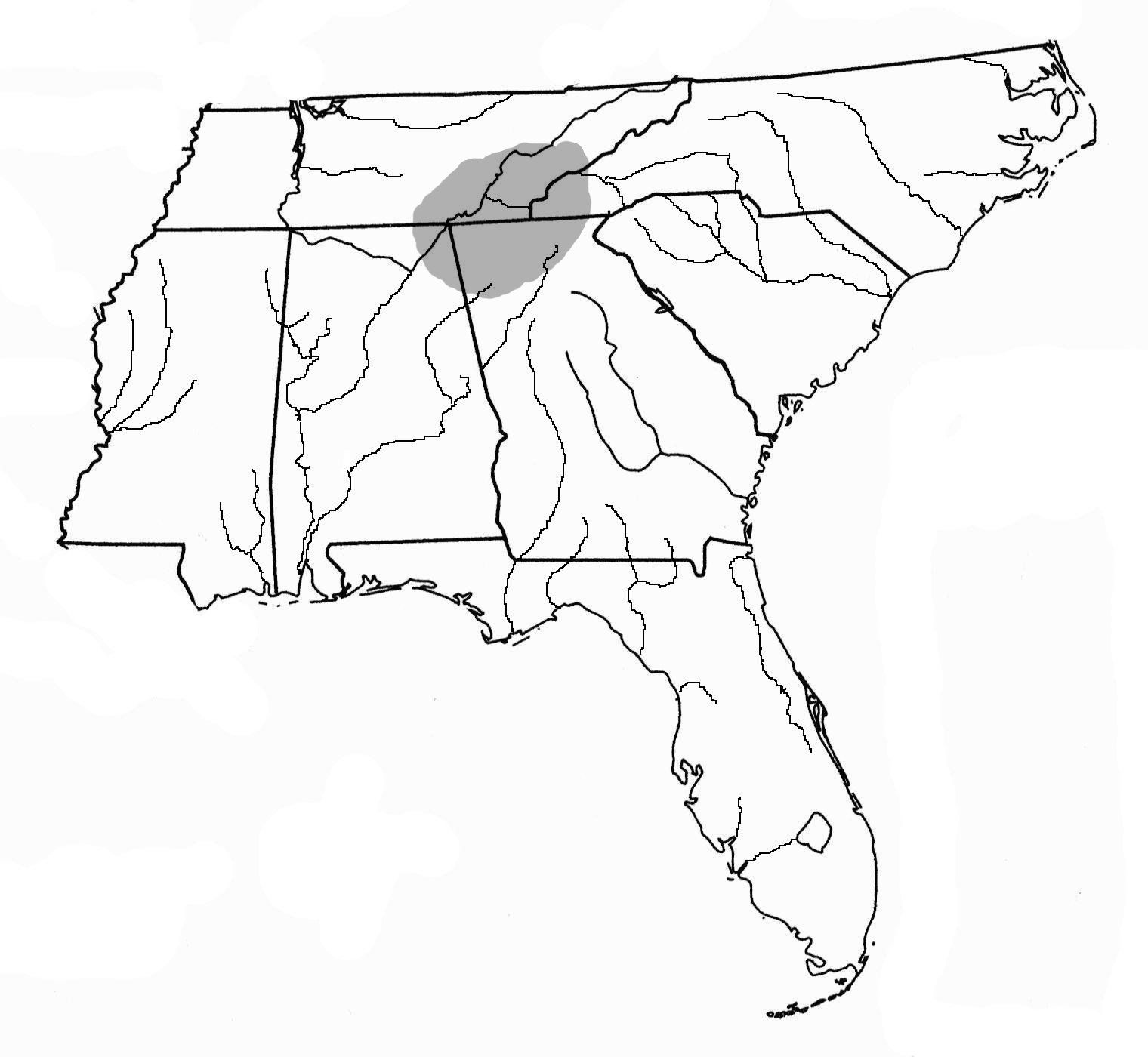
Keel 1976 Pl.49
RESEARCH: Bennie C. Keel named and defined this type in 1976.[iii] Keel’s research of this type was conducted in Cherokee related sites in North and South Carolina, eastern Tennessee and northwestern Georgia. The type was probably named after the Pigeon River that runs from eastern into western North Carolina in the vicinity of Keel’s research.
TEMPER: Medium to coarse crushed quartz was used as temper in this type. Exterior sherd colors range from light brown, light to dark gray, to red to orange. The lighter colors are more common.
SURFACE DECORATION: The check squares stamped on the surface of this type average 4x5mm but can be as large as almost twice that size. Stamping covers the entire vessel except the flat bottoms of vessels with podal supports. Keel noted that the classic rubbing of the interior surface of the vessel with a steatite pebble produced an unmistakable sheen that is one of the identifying characteristics of the type.
VESSEL FORM: Pigeon vessels are known to include simple open bowls, straight-sided conoidal jars, jars with slightly restricted necks, and flat based jars with large podal supports. Rims are straight to slightly flaring with lips that are rounded or paddle-flattened and slightly everted. Basal supports were conical or wedged when present.
CHRONOLOGY: Dates relating to the Pigeon period reported by Keel ranged between AD 200 and 400, indicating that this is a Middle Woodland pottery type. The Garden Creek site contained Swannanoa Stemmed, Swan Lake (Pigeon Side Notched), Yadkin (Garden Creek Triangular), Copena Triangular, Coosa Side Notched, Haywood (Woodland) Triangular, and South Appalachian Pentagonal points. Many of these names were given by site investigators.
GEOGRAPHIC DISTRIBUTION: Selected sites for dating this type indicate its distribution from eastern Tennessee, western North Carolina, extreme western South Carolina, and northwestern Georgia.
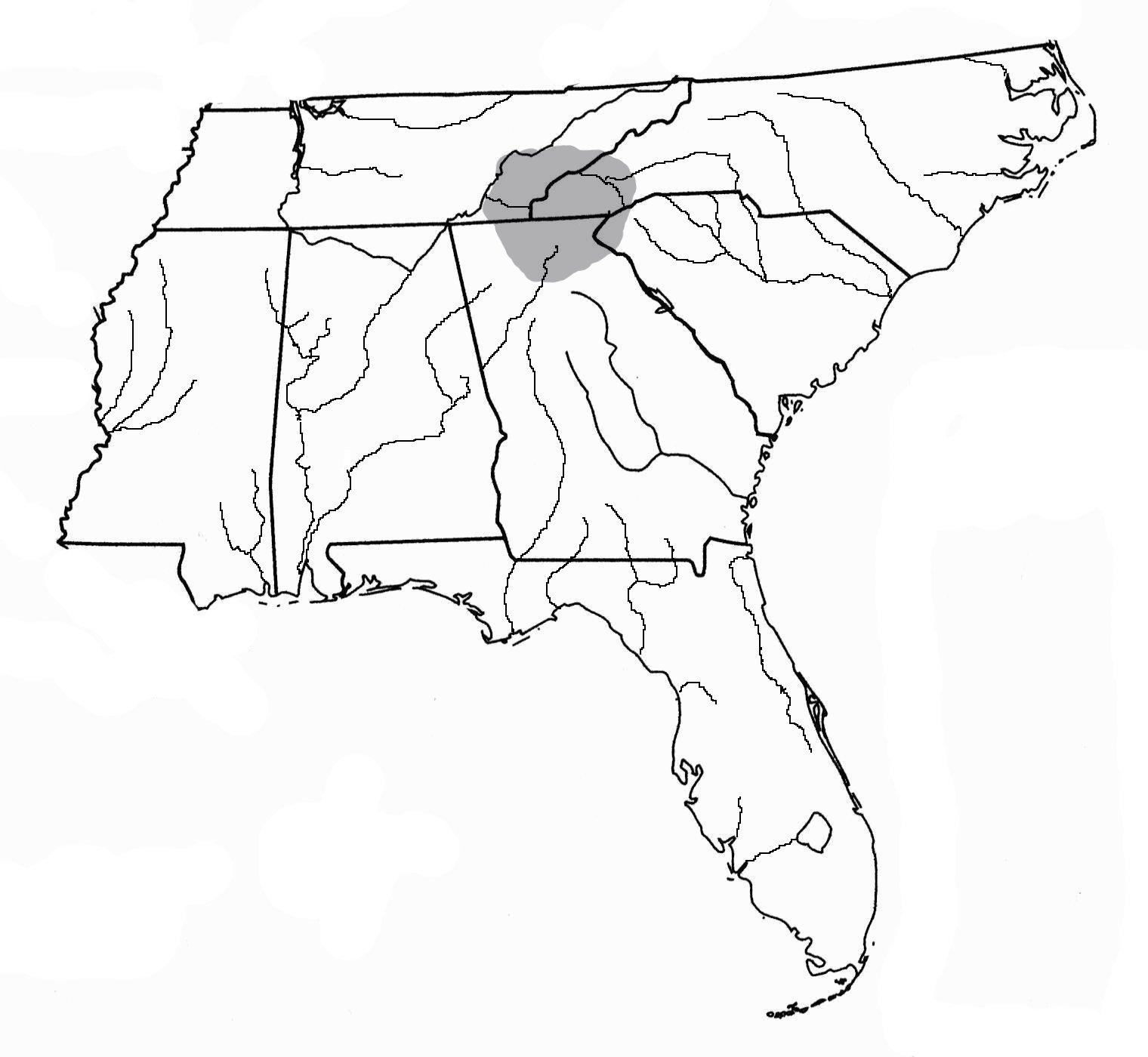
Roy Dickerson, Jr. 1976, Pl.64 E
RESEARCH: Roy Dickens, Jr. defined this type from the excavations done in 1938 at the Warren Wilson site; a Cherokee village site located in the interior region of the Southern Appalachian Mountains on the campus of Warren Wilson College in Buncombe County, North Carolina.
TEMPER: Fine to coarse sand was used as temper. The sand contained mica in North Carolina examples. Crushed quartz was also used, but probably in earlier examples. Sherds from northwestern North Carolina might also be tempered with steatite, probably as a later development. Some shell tempering was also done in Tennessee. The texture is fairly even and compact with tempering materials accounting for between 20 and 40 percent of the paste content. The interior surfaces are gray to black and are lightly smoothed to burnished. Exterior surfaces are light gray, tan or buff.
SURFACE DESIGN: Check stamping covered the entire surface of about 8 to 10 percent of the sherds recovered in western North Carolina. The checks are generally square and seem to get larger in later periods. One of the most striking features of decoration is the rim treatment. For rim features and decorations see the notes on Pisgah Rectilinear and Curvilinear Stamped pottery.
VESSEL FORM: Vessel forms include globular jars and open bowls. Vessels later increased in size. Lips are rounded, flattened, or ridged. Bases are rounded to slightly pointed on jars and rounded to slightly flattened on bowls. Applique strips are normally added to the upper portion of the rim for decoration purposes when the lip is everted. Appendage forms appear, sometimes in combined forms, as part of the rim decoration. Applique strips were applied horizontally or in “U” or “V” shapes. Also included were vertical lugs, nodes, and small castellations (with nodes or lugs on collared jars), decorated loop handles, and some rare strap handles.
CHRONOLOGY: In North Carolina, Pisgah pottery is preceded by Connestee pottery and followed by Qualla pottery. In Tennessee they can be mixed with Dallas pottery. At the Garden Creek site in North Carolina, carbon dating put Pisgah pottery at A.D. 1435+/-70. Dickens concluded that the Pisgah pottery should be placed at ca. A.D. 1000 to 1450 during the Early and Middle Mississippian period. Related points include Mississippian Triangular (given multiple names in North Carolina), and Guntersville points.
GEOGRAPHIC DISTRIBUTION: Dickens listed several sites scattered across western North Carolina and eastern Tennessee that contained Pisgah pottery. Several sites along the Saluda River in South Carolina and several as far south as White County, Georgia have contained significant amounts of Pisgah pottery.
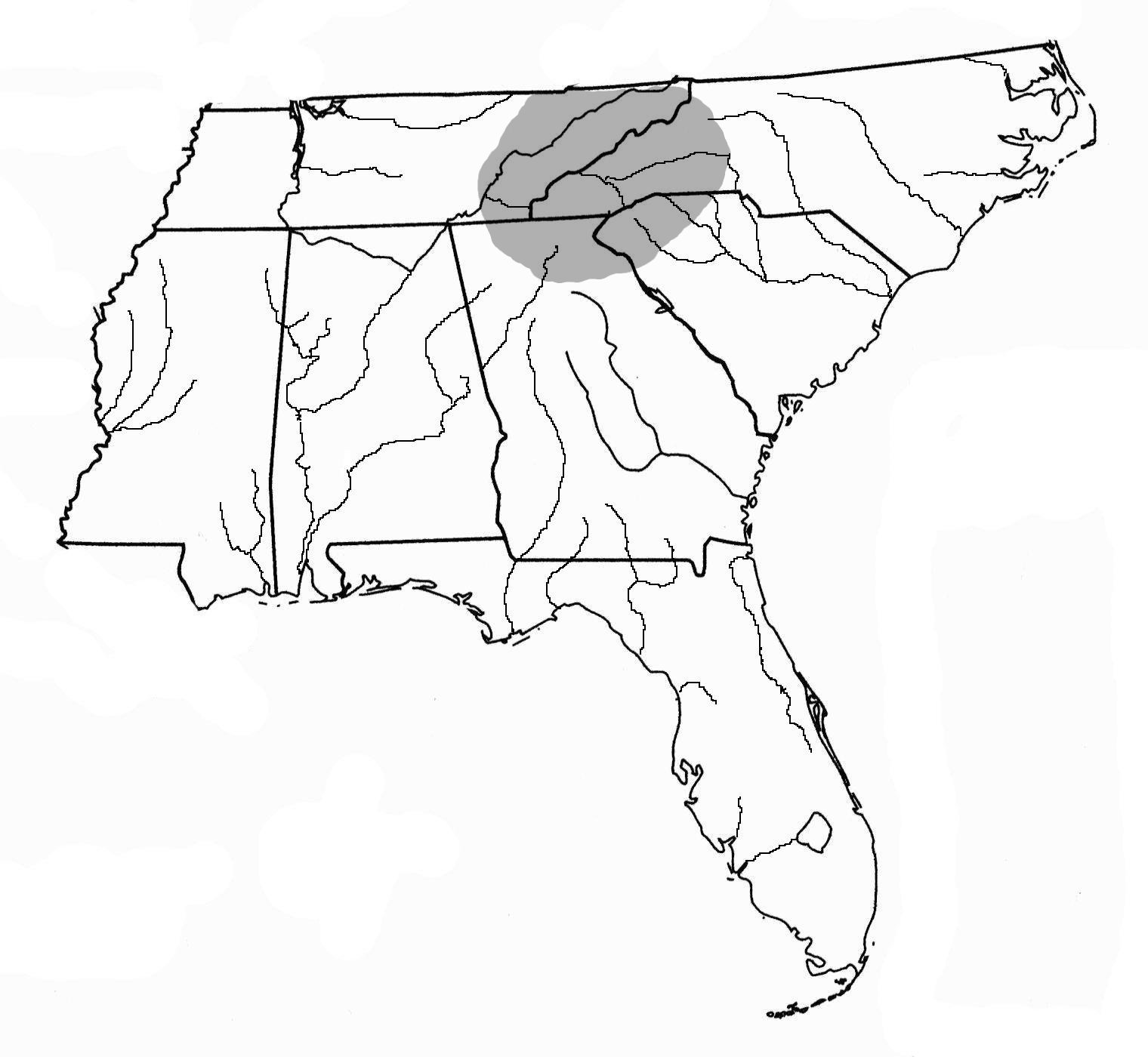
From the University of Georgia collections
RESEARCH: This type was defined by Joseph Caldwell and Antonio Waring in 1939 from the excavations at the Irene site.[iv] The type was named for the Savannah River and the city of Savannah, Georgia.
TEMPER: The grit used in this type as temper ranges from fine to coarse. The surface can be fine to coarse and is usually sandy. The core color ranges from buff to dark gray and is often the same as the surface. The exterior color can be buff, red, light brown or dark gray. The interior surfaces are smoothed and sometimes burnished.
SURFACE DECORATION: The check stamping on this type was done with a paddle. The checks are square or diamond in shape and are small, measuring 3 to 6mm in size. Stamping is carefully done but sometimes appears faint. Over-stamping is rare and generally occurs on vessel bottoms. Check Stamping cover all or most of the vessel, sometimes leaving the rim area plain. Double rows of reed punctations, sometimes with nodes, may appear in the rim area.
VESSEL FORMS: The known vessel form is a globular jar with a rounded base. Rims usually flare, but can be everted, straight, or rarely in-curving. Folded rims are known, but seem to appear late in the type period. These seem to have been done after the stamping was complete and were polished or smoothed. Lips are squared, stamped beveled, or sometimes rounded.
CHRONOLOGY: This type belongs to the Middle Mississippian, Savannah period. Related point types include Mississippian Triangular and Guntersville points.
GEOGRAPHIC DISTRIBUTION: Williams has suggested that this type is found over the entire state of Georgia. It occurs at least in areas indicated in north Florida, Georgia, South Carolina and perhaps Alabama.
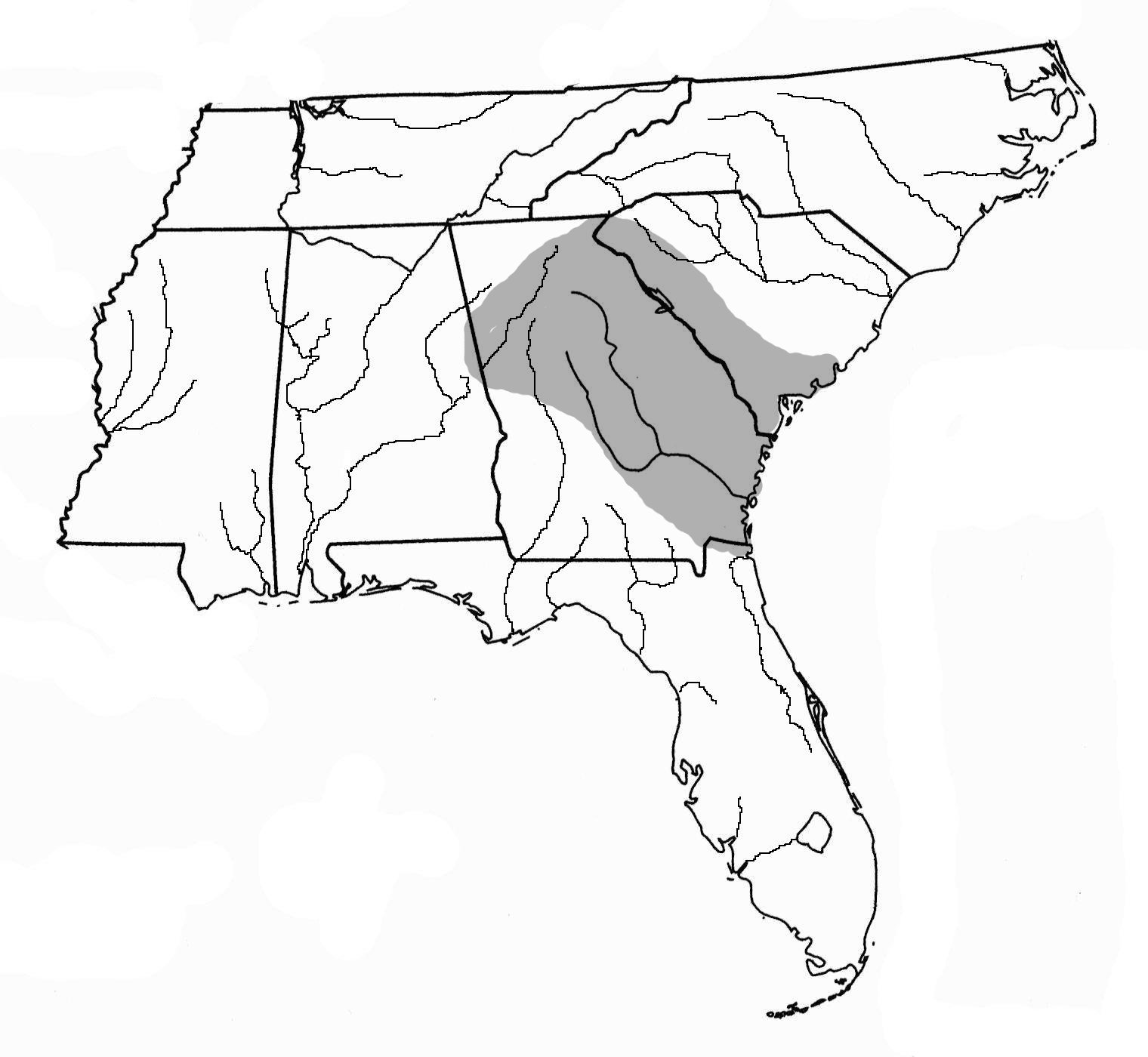
Swannanoa vessel form
RESEARCH: Originally named the “Early” series by Patricia Holden, this was renamed as the Swannanoa series by Keel in 1976 based on his work in Cherokee related sites in North and South Carolina.[v] The type is named after the Swannanoa River.
TEMPER: This type is tempered with large pieces of crushed quartz (56%) or with coarse sand. The tempering material in either case accounts for nearly half of the paste material. The exterior color of the fired paste is red to reddish-brown or light brown.
SURFACE DECORATION: The surface of the vessel is covered with check stamping. The squares are large and shallow, measuring an average of 7 X 9mm. Stamping is poorly executed.
VESSEL FORMS: Known vessel forms include large to medium sized conoidal jars and hemispherical bowls. The rims are vertical or slightly inverted and the lips are rounded or flattened, with a very small percentage notched or cord-marked. The bases are conical, some with a nipple-like protrusion; or are jars and are rounded to slightly flattened on bowls.
CHRONOLOGY: This is the earliest Woodland pottery series in western North Carolina, dating to the Early to Middle Woodland period. Related points are Badin Crude Triangular, Coosa, Swannanoa, Swan Lake, Camp Creek, Copena, Yadkin, and Greenville points.
GEOGRAPHIC DISTRIBUTION: This type is found in western North Carolina, western South Carolina and, perhaps, extreme northeastern Georgia.
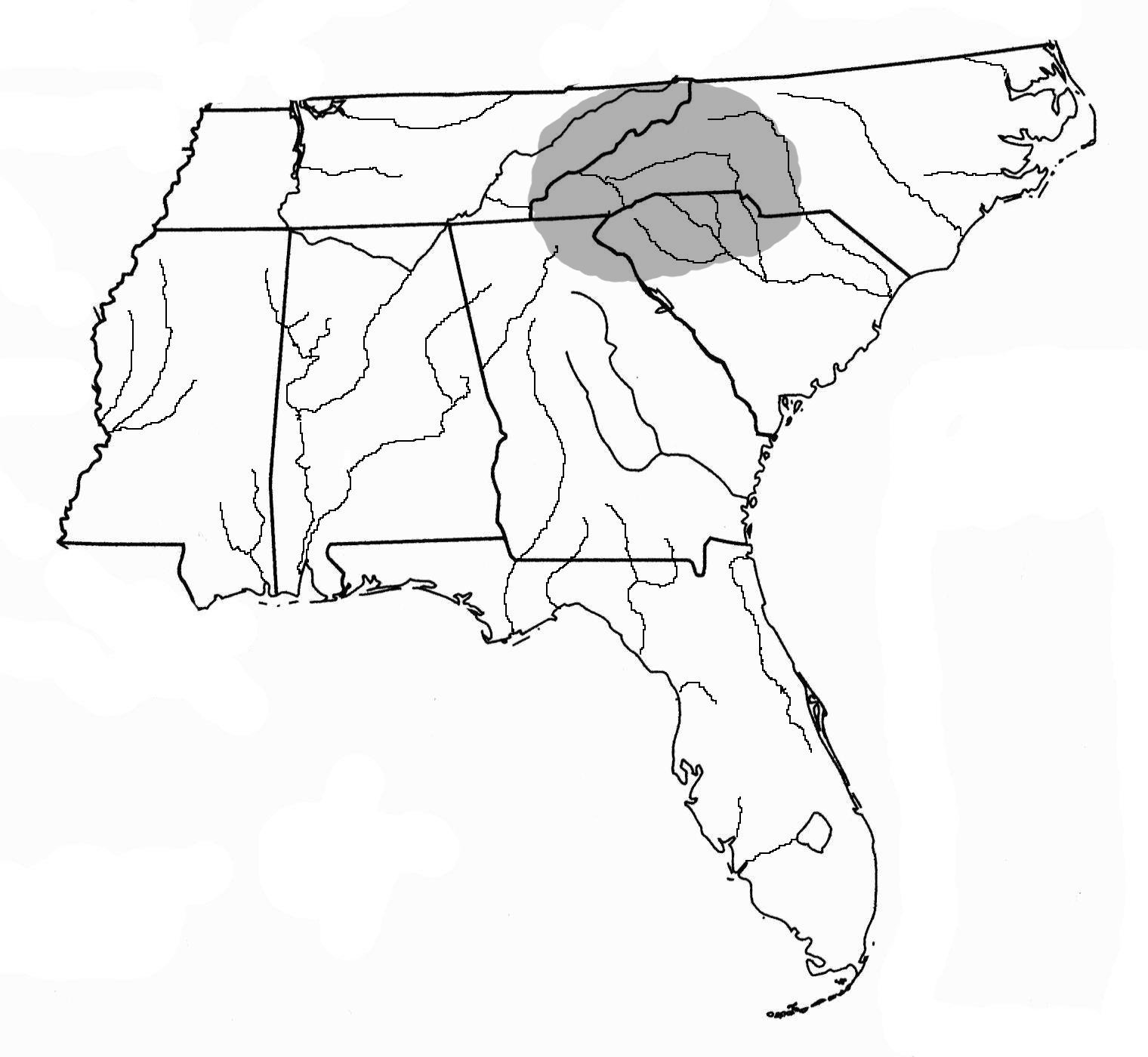
[i] Williams, Mark. Georgia Indian Pottery web site, University of Georgia
[ii] Lewis, Thomas M.N. and Madeline Kneberg. Hiwassee Island An Archaeological Account of Four Tennessee Indian Peoples, University of Tennessee Press, 1946
[iii] Keel, Bennie C., Cherokee Archaeology, A Study of the Appalachian Summit, University of Tennessee Press, Knoxville 1976
[iv] Williams, Stephen, The Waring Papers, The Collected Works of Antonio J. Waring, Jr., Papers of the Peabody Museum of Archaeology and Ethnology, Harvard University, Cambridge, Mass. Vol. 58, 1977
[v] Keel, Bennie C., Cherokee Archaeology, A Study of the Appalachian Summit, The University of Tennessee Press, 1976, p. 260